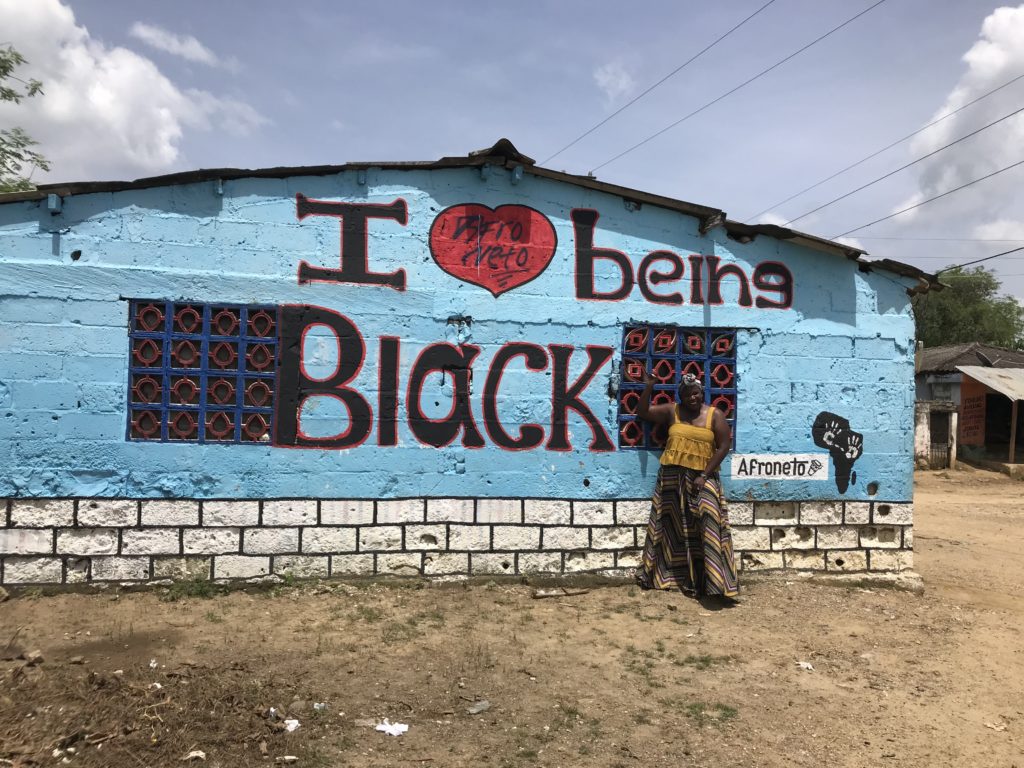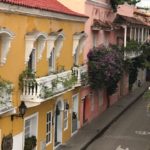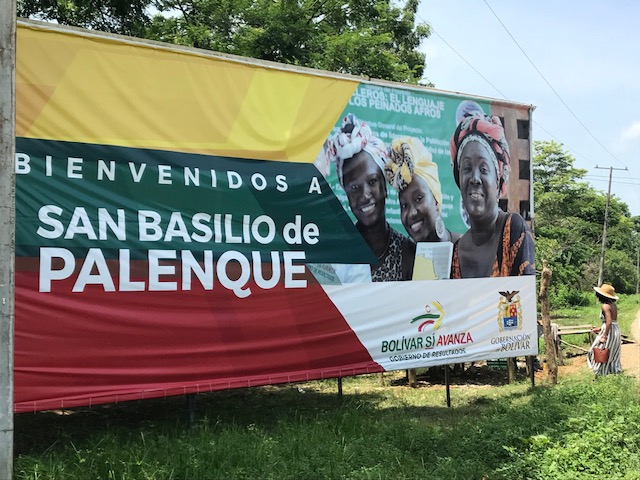
The beautiful Afro-Colombian women line the streets adorned in brightly colored dresses impressively balancing bowls of fruit upon their heads. Many magazines and websites feature these beauties, but few know their history. These are the women of San Basilio De Palenque and they are fierce! I was fortunate enough to experience this culture and learn of its history first hand.
Palenque is the first free slave colony in the Americas. Still thriving today, in 2005 the village was declared Masterpieces of the Oral and Intangible Heritage of Humanity by UNESCO. The small village of about 3,000 was founded by Benkos Bioho’, born into royalty off the coast of Guinea-Bissau. He was seized by a Portguese slave trader and later sold to Spaniards and arrived in what is now Colombia in South America.
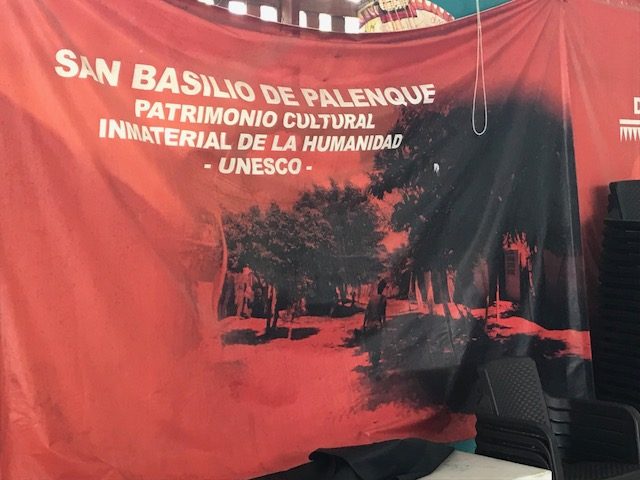
His great resistance was the catalyst of his escape from the slave port, along with ten others, and ultimately started the town of San Basilio de Palenque, then known as the “village of the maroons“. Under great duress, the then Governor of Cartagena offered Bioho’ a peace treaty recognizing the autonomy of the Matuna Bioho Palenque and accepting his entrance into the city as armed and duress in Spanish fashion. The self-contained village has continued to maintain its autonomy since the late 16th century.

We began our tour with a welcome from our local guide in the village’s original language Palenquero, a Spanish-based creole unique to the Palenque people. He offered a great base for Palenque history. Starting at the village school, we were taught that children attend school from February to November, learn about their rich history, language, and the story of its leader. School is taught by older village historians in an attempt to pass along the story for generations. In Palenque the dream is to one day return to their native land of Africa, with little interest in fulfilling the American dream. The community supports itself with numerous roles carved out by the older community memb ers. The men farm and transport the women and others by motorcycle into town to work, the women sell clothing, fruit, and desserts on tours and in town, while the children enjoy learning, sprinkled with long periods of soccer and a leisurely life (NO ELECTRONICS!). The women of the community cook and feed the school children from across the road, and the older men, like sheriffs, ride throughout the village to maintain order. Cartagena/Colombia police do not come to the village of Palenque. They are governed by the laws of their ancestors. With the recent police climate in the US, how profound would a model such as this be and how would it improve the recent climate or better yet eliminate the need for policing all together? Although many groups & organizations are adopting similar solutions, we could learn something here.
ers. The men farm and transport the women and others by motorcycle into town to work, the women sell clothing, fruit, and desserts on tours and in town, while the children enjoy learning, sprinkled with long periods of soccer and a leisurely life (NO ELECTRONICS!). The women of the community cook and feed the school children from across the road, and the older men, like sheriffs, ride throughout the village to maintain order. Cartagena/Colombia police do not come to the village of Palenque. They are governed by the laws of their ancestors. With the recent police climate in the US, how profound would a model such as this be and how would it improve the recent climate or better yet eliminate the need for policing all together? Although many groups & organizations are adopting similar solutions, we could learn something here.
From there we visited the town center which housed the village’s museum, historical archives, town hall meeting center, and radio station. The center exhibited canvas posters of the various projects the people of Palenque are working on. Many are self-funded via tourism relationships.
As Palenque produces a good number of singers, it created its own radio and recording studio to encourage the gift and keep the original score alive. The group was lucky enough to witness a performance from the daughter of one of the famous, now deceased, Palenque women. Here talent was just as dynamic. In addition to her singing and dancing abilities, she sold cloth wraps and desserts to visitors. Alexa Rocha, local to Cartagena and owner of Experience Real Cartagena http://experiencerealcartagena.com/, surprised our tour mate with a special birthday gift. Also timely, as I had be questioning how to tie the famed wraps myself.
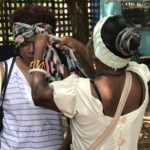
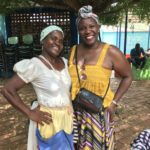 Having recently undergone an ancestry search, personally, this was such a renewed experience for me. I found that a good amount of my DNA (24%) comes from the Cameroon/Congo region. While, like the Palenque people, I am searching to return to my homeland, this was a “second best” freeing experience.
Having recently undergone an ancestry search, personally, this was such a renewed experience for me. I found that a good amount of my DNA (24%) comes from the Cameroon/Congo region. While, like the Palenque people, I am searching to return to my homeland, this was a “second best” freeing experience.
From there we were on to view much of the Afro-Colombian art featured across many blogs, social media and magazines. It was exhilarating to witness the group’s excitement towards the photo-ops and “boomerang” (Instagram video effect) opportunities. The references to “Black Power” fist up and Wakanda signs marked the highlight of the encounter.
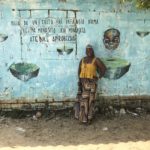
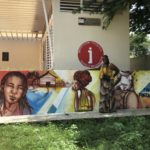
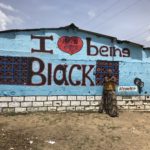
Next, on to the village performance center to experience a special treat from the young dancers of the Palenque dance school. Here they are taught traditional dance and the foundation of the moves, of which one objective is designed for mating. Many of us on the tour haven’t moved like that in fifteen years or so, if not EVER. Yours truly, however, did tap into my inner Congo and gave my young Palenque dance partner a run. Minus the floor action, if she did it…I did it. The handmade drums were beautiful and the Palenque rappers culminating the performance was a delight.


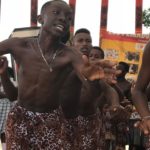
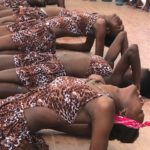
Within the same town center, we were briefed on the (hair) braiding project ran by one of the Palenque women. The program teaches young girls the valuable skill (I know I appreciate it), and the history of hair braiding as it relates to the town’s growth & existence. Slave escape routes were smartly braided in the hair of girls and young women. Slaves used this guide to lead themselves and their families to freedom.


To experience this first hand was to essentially teleport back to this century, embracing the pain, yet reveling in the success of fighting injustice to marked freedom. I can’t help but contemplate similar communities, such as Black Wall Street in Greenwood, Tulsa, Sugarland, MD, and nearly one hundred other communities that were established by freed slaves after the Civil War, what they had in common or lacked, as sadly, many have and/or are dying out. Maybe its the persistence of its founders passed down from generation to generation, or maybe its mere geographical advantage and more tolerance therein, but something feels different here. Something feels strong here. Something feels familiar here.
